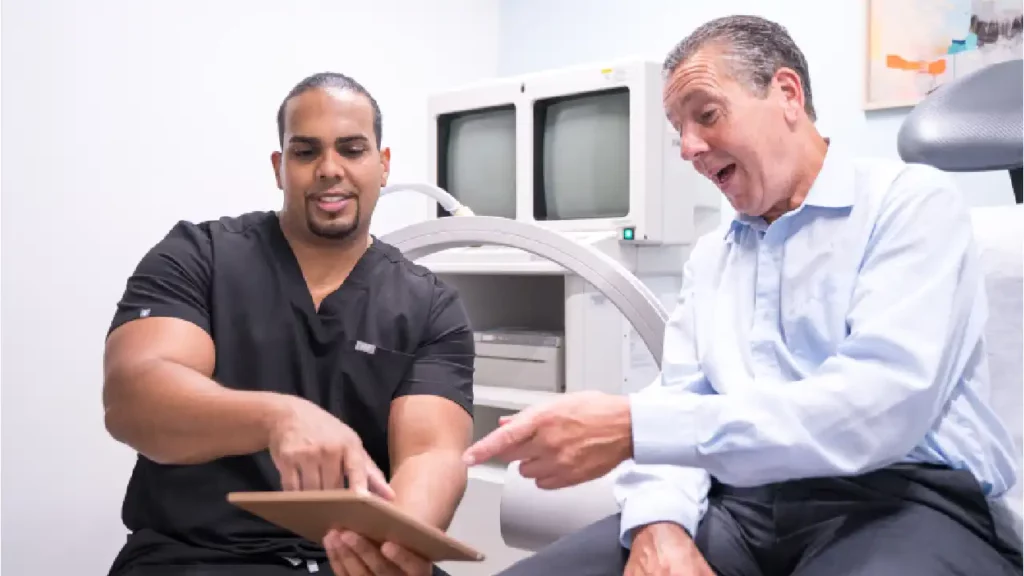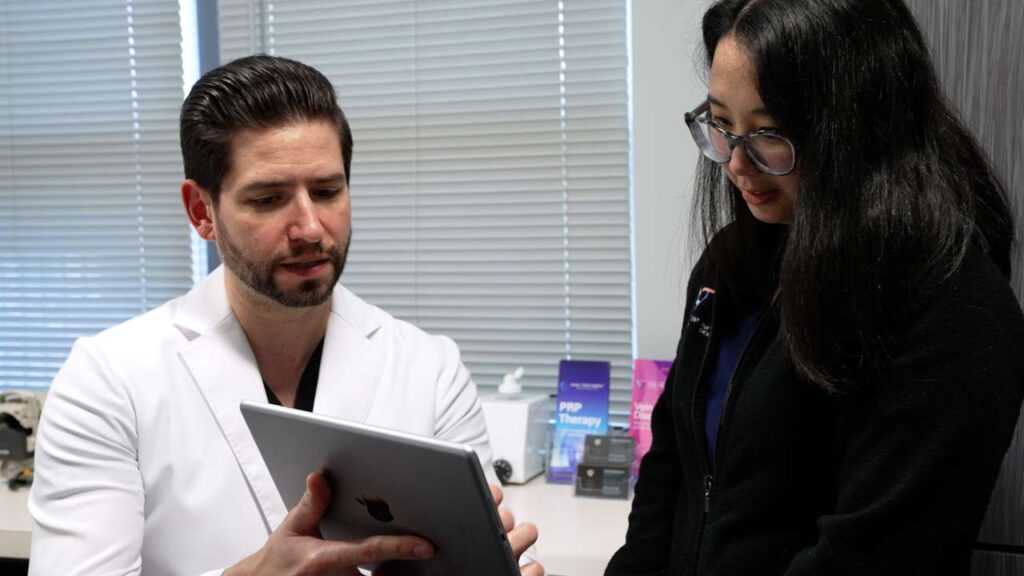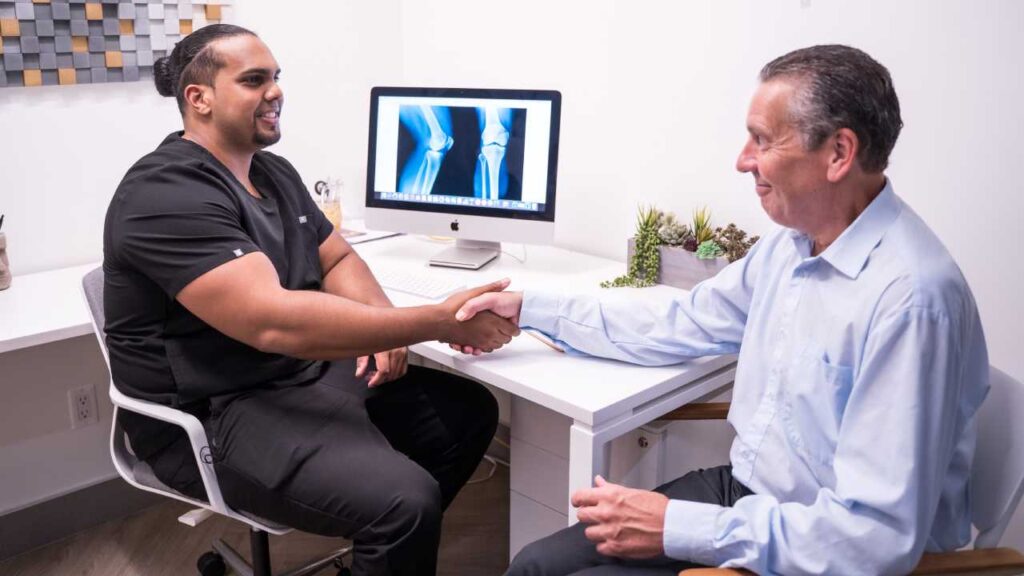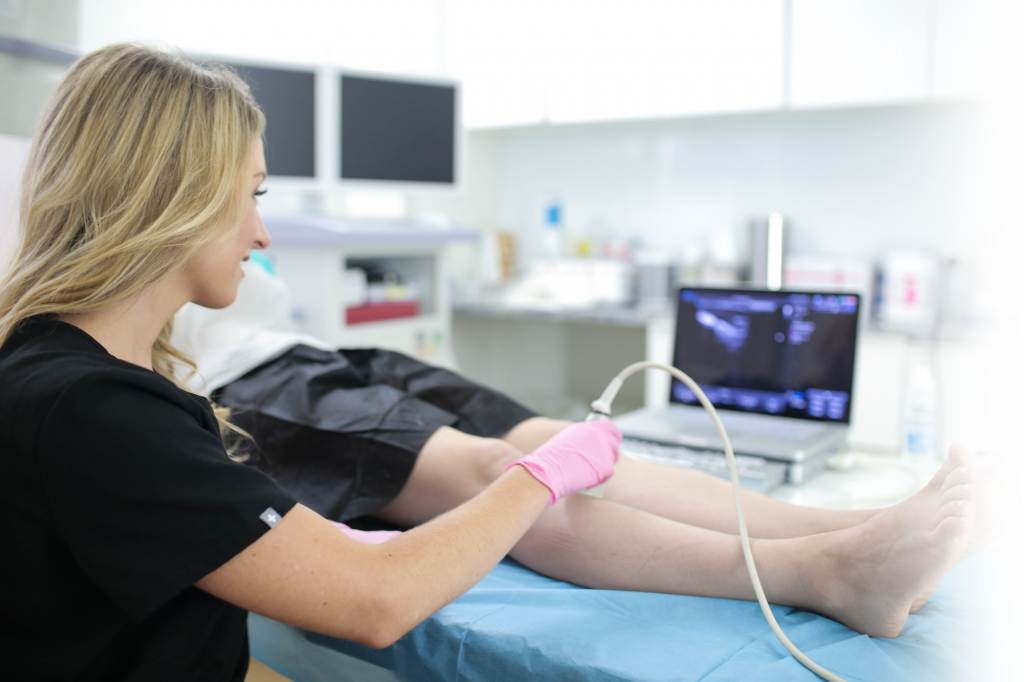What Is the Latest Treatment for Large Varicose Veins in NJ?
If you’ve postponed vein treatment due to concerns about vein surgery, you’ll be glad to know that most patients no longer require surgery. In recent decades, minimally invasive procedures have become the recommended treatment for the vast majority of people. Vein doctors now use sclerosants, vein adhesives, radiofrequency energy, laser energy, and rotating catheters to eliminate veins inside the body, rather than surgically removing them.
Each of these procedures is outpatient and requires no large incisions or general anesthesia. Even the small number of patients who require surgery now have less invasive surgeries to choose from. Book an appointment with our Harvard-trained vein doctors in New Jersey to discuss the new ways we treat varicose veins.
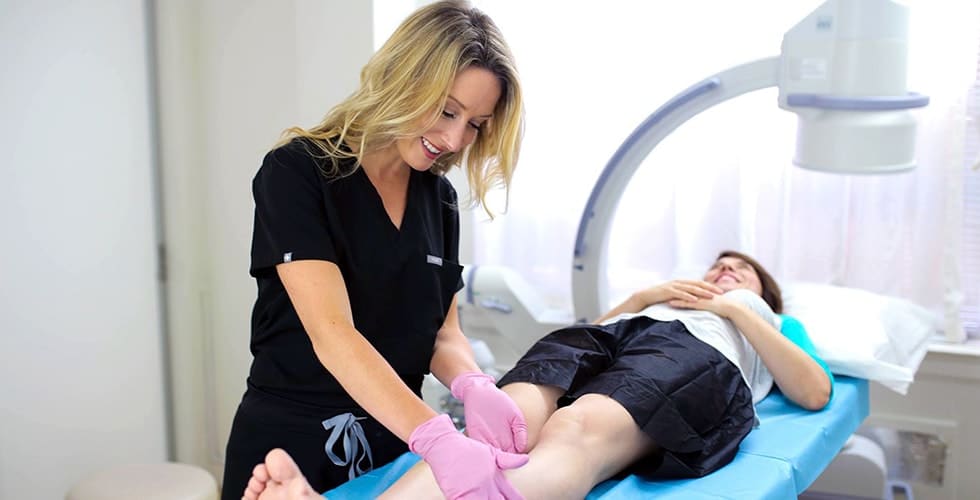
Do Vein Doctors Still Treat Varicose Veins with Surgery?
Surgery is no longer a first line of treatment for varicose veins. Technological advances have produced gentler ways to eliminate veins that reduce the risks, costs, downtime, and discomfort of vein removal. In addition, studies show that minimally invasive varicose vein treatment has a lower incidence of recurrence than treating veins with surgery.
This is because when veins are cut away, they have the potential to revascularize. When veins grow back, they don’t have valves. These valves are what keep blood flowing in a singular direction, toward the heart. Veins without valves allow blood to flow in reverse, creating pressure that generates varicose veins and spider veins.
So, surgically removing a varicose vein can ironically produce more varicose veins. However, a small percentage of people might need surgery, if they have blood clots or severe tortuosity in their veins. For these patients, it’s important to choose a vein surgeon who is trained in minimally invasive solutions too.
These vein specialists can suggest alternatives like ambulatory phlebectomy, which uses small punctures instead of large incisions, eliminating general anesthesia and several risks associated with traditional vein stripping surgery. A minimally invasive vein doctor can also combine modalities to reduce the risk of recurrent varicose veins.
Has Ambulatory Phlebectomy Replaced Traditional Phlebectomy?
With ambulatory phlebectomy, the patient remains awake and is only given local anesthesia. The doctor makes a series of punctures, rather than deep incisions, and the vein is pulled loose through these holes. It is less traumatic to bodily tissue and does not require stitches or significant downtime to heal.
However, it has not replaced traditional phlebectomy entirely. Some patients still need incisions to extract the vein, and some insurance companies only cover the older method. But the number of patients who need surgical vein stripping has dropped considerably, and it continues to drop as new treatment methods emerge. Insurance companies increasingly cover minimally invasive vein treatments, as they’re proven to be more effective and produce fewer complications than vein surgery for most patients.
Is Endovenous Laser Therapy the New Form of Laser Treatment?
Surface laser treatments have long been used for superficial vein damage like spider veins on the face. But these treatments have limitations. They can’t treat deeper or larger veins since the amount of heat needed would damage the surface of the skin. In addition, some patients are sensitive to surface lasers and experience negative skin reactions.
Endovenous laser therapy is a newer way to treat deep veins, large veins, varicose veins, and veins in patients with sensitive skin. In these treatments, tumescent anesthesia is injected around the damaged vein to protect the surrounding tissue from heat. Then a laser fiber is threaded through the hollow needle and positioned on the wall of the vein. The vein doctor activates the fiber, causing it to heat up and cauterize the vein. This creates scar tissue that blocks blood from entering, so it’s redirected into adjacent veins.
Endovenous laser therapy causes damaged veins to shrink from sight. It also treats issues in deeper veins, like broken valves, that produce surface vein damage. Unlike pulsed-dye lasers and other surface laser treatments, endovenous lasers don’t irritate the skin. Surface lasers are still used for small veins that result from sun damage, skin injury, and other medical issues. But for leg veins, varicose veins, and Chronic Venous Insufficiency, endovenous laser therapy is a superior procedure.
How Is Radiofrequency Energy Used in the Latest Treatments?
Another way vein doctors seal off damaged veins is by heating them with radiofrequency energy. Radiofrequency ablation is performed much like endovenous laser ablation, including an injection of tumescent anesthesia prior to heating the vein. But radiofrequency uses sound waves instead of light, so it doesn’t get as hot. This makes it a bit more comfortable for some patients, and it’s preferred by our vein doctors over lasers. Each patient has unique vasculature, symptoms, and preferences, so we offer a full range of treatment options to suit everyone. Both endovenous lasers and radiofrequency are safe and effective ways to treat varicose veins.
Do Doctors Still Tell Patients to Wear Compression Stockings?
It was once common for everyone with vein issues to wear compression stockings. However, the cause behind most varicose veins is an underdiagnosed disease called Chronic Venous Insufficiency. Compression stockings can’t correct this issue, since it involves broken valves in deep veins that aren’t repaired by compression. In addition, compression isn’t safe for everyone, including certain patients with blood clots or blood pressure issues.
Compression stockings should be selected by your vein doctor, since insufficient compression won’t help, and excessive compression could be dangerous. For most patients who wear compression stockings, there is only a mild improvement in symptoms, and they must wear them for long periods of time or indefinitely.
A better solution for many patients is a 30-minute, minimally invasive vein treatment that eliminates the vein damage and the symptoms. Ask our vein specialists about sclerotherapy, radiofrequency ablation, vein adhesives, endovenous laser ablation, and mechanochemical ablation before settling for long-term compression therapy.
Do New Treatments Work on All Leg Veins and Saphenous Veins?
What is the latest treatment for varicose veins that’s ideal for you? Today’s minimally invasive treatments erase everything from small spider veins to large varicose veins, as well as the vein disease that causes them. Leg veins like the great saphenous vein are particularly susceptible to varicose veins, spider veins, and vein disease.
Vein doctors who are trained in the latest techniques can often eliminate each of these issues in a single session. With ultrasound guidance, they can locate the source of vein damage and treat the cause, damage, and symptoms with the same treatment. If you want cutting-edge care, choose our state-of-the-art vein centers in New Jersey. Visit our award-winning vein doctors in Clifton, Paramus, Woodbridge, Scotch Plains, or Woodland Park for unprecedented results.
